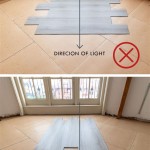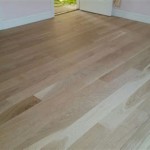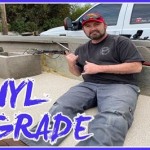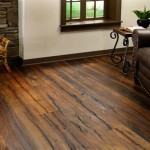Installing Particle Board Flooring: A Comprehensive Guide
Particle board, also known as chipboard, is a composite material made from wood chips, shavings, or sawdust bonded together with a resin. While generally viewed as a subflooring material, it is occasionally installed as a finished flooring surface in areas where cost is a critical factor. This article provides a detailed guide to installing particle board flooring, focusing on the necessary preparations, installation techniques, and considerations for ensuring a durable and aesthetically acceptable result.
It is crucial to understand that particle board flooring is not suitable for all environments. Its primary weakness is its susceptibility to moisture. Exposure to water can cause swelling, warping, and disintegration of the material. Therefore, particle board flooring is generally recommended only for dry, stable interior environments, such as above-ground-level rooms with well-controlled humidity. Bathrooms, kitchens, and basements are generally unsuitable for particle board flooring due to the higher potential for moisture exposure.
Prior to commencing the installation process, a thorough assessment of the subfloor is necessary. The existing subfloor must be clean, level, and structurally sound. Any imperfections, such as unevenness, cracks, or loose boards, must be addressed before installing the particle board. This ensures a stable and level base for the new flooring.
Preparation: Assessing and Preparing the Subfloor
The condition of the subfloor significantly impacts the longevity and performance of the particle board flooring. A thorough inspection should identify any potential problems that need to be rectified. A level surface is paramount for preventing flexing and creaking of the particle board. Any dips or high spots in the subfloor should be corrected using leveling compound or shims.
Loose or damaged subfloor boards should be replaced or repaired. Loose nails or screws should be driven in further or replaced with longer fasteners. If the subfloor is plywood, check for delamination or water damage. Damaged plywood should be replaced to ensure a solid foundation. Cleanliness is also critical. The subfloor should be swept and vacuumed to remove any debris, dirt, or dust that could interfere with the adhesion of the particle board.
Moisture content is another crucial factor. The subfloor must be dry before installing the particle board. Excessive moisture can lead to warping and swelling of both the subfloor and the particle board. A moisture meter can be used to check the moisture content of the subfloor. Generally, the moisture content should be below 12% for wood subfloors. If the moisture content is too high, allow the subfloor to dry thoroughly before proceeding.
Additionally, it is recommended to apply a moisture barrier to the subfloor, especially if it is a concrete slab. A polyethylene film or a liquid-applied moisture barrier can help prevent moisture from migrating up into the particle board. This step is particularly important in areas where moisture is a concern.
Installation Techniques: Laying and Securing the Particle Board
Once the subfloor is properly prepared, the installation of the particle board can begin. It is essential to follow the manufacturer's recommendations regarding installation procedures and fastener types. Proper installation techniques are crucial for ensuring a durable and aesthetically pleasing result.
Before starting the installation, allow the particle board to acclimate to the room's temperature and humidity for at least 48 hours. This allows the material to expand or contract as needed, minimizing the risk of warping or buckling after installation. Spread the particle board pieces out in the room to ensure even acclimation.
Begin laying the particle board along the longest wall of the room, leaving a small expansion gap of approximately 1/4 inch between the edge of the board and the wall. This gap allows for expansion and contraction of the material due to temperature and humidity changes. Use spacers to maintain a consistent expansion gap along the wall.
Stagger the seams of the particle board to create a more structurally sound and visually appealing floor. Avoid placing seams in a straight line across the room. A staggered pattern helps distribute weight evenly and reduces the risk of weak points in the flooring.
Secure the particle board to the subfloor using appropriate fasteners. Screws are generally preferred over nails, as they provide a stronger and more secure connection. Use screws that are long enough to penetrate the subfloor sufficiently but not so long that they protrude through the bottom. The spacing of the fasteners should be consistent and in accordance with the manufacturer's recommendations. Typically, screws should be spaced every 6 to 8 inches along the edges of the board and every 12 inches in the field.
When cutting the particle board, use a sharp saw blade designed for cutting composite materials. A circular saw or a jigsaw can be used, depending on the complexity of the cuts. Always wear safety glasses and a dust mask when cutting particle board, as it can produce a significant amount of dust. Ensure that the cuts are clean and precise to minimize gaps between the boards.
Around doorways and other obstacles, use a jigsaw to cut the particle board to fit precisely. Use a template or measure carefully to ensure accurate cuts. Leave a small expansion gap around obstacles as well.
Finishing and Considerations: Protecting and Maintaining Particle Board Floors
Once the particle board flooring is installed, proper finishing and maintenance are essential for protecting the material and extending its lifespan. Particle board is relatively soft and susceptible to scratches and dents, so it is important to apply a protective coating to the surface.
The choice of finish depends on the desired aesthetic and the level of protection required. Polyurethane is a popular choice for particle board flooring, as it provides a durable and water-resistant finish. Apply several coats of polyurethane, following the manufacturer's instructions. Sand lightly between coats to ensure a smooth and even finish.
Alternatively, a sealant specifically designed for particle board can be used. These sealants help to protect the material from moisture and wear. Apply the sealant according to the manufacturer's instructions.
Area rugs can be used to protect high-traffic areas and prevent scratches. Place rugs in hallways, entryways, and under furniture to minimize wear and tear on the particle board flooring.
Regular cleaning is essential for maintaining the appearance of particle board flooring. Sweep or vacuum the floor regularly to remove dirt and debris. Avoid using excessive water when cleaning the floor, as this can damage the particle board. Use a damp mop with a mild detergent specifically designed for wood floors.
Avoid using abrasive cleaners or scouring pads, as these can scratch the surface of the flooring. Clean up spills immediately to prevent staining or water damage. Use coasters under drinks and felt pads under furniture legs to protect the floor from scratches and dents.
Regularly inspect the particle board flooring for signs of damage, such as swelling, warping, or delamination. Address any problems promptly to prevent further damage. If the flooring becomes significantly damaged, it may need to be replaced.
In summary, installing particle board flooring requires careful preparation of the subfloor, proper acclimation and installation techniques, and appropriate finishing and maintenance practices. While particle board is a budget-friendly option, its susceptibility to moisture limits its suitability for certain environments. By following these guidelines, it is possible to achieve a functional and aesthetically acceptable particle board floor in appropriate settings.

Particle Board As A Flooring Solution

Parquetry Engineered Flooring Installation Method Over Particleboard

Solid Hardwood Flooring Installation Method Over Particleboard

Particle Board Flooring Durable Building Material

Engineered Flooring Installation Method Over Particleboard

Parquetry Solid Hardwood Flooring Installation Method Over Particleboard

How To Prevent Flooring Problems Prior Installation

Installing Wood Subfloors Over Concrete Hardwood Floors

Particle Board Underlayment Pros Cons And Cautions Home Efficiency Guide

Installing Hardwood Flooring Over Particleboard Magnus Anderson
Related Posts








